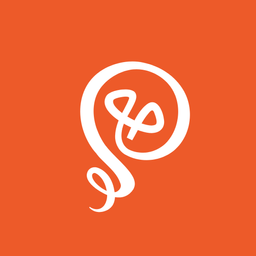AI Strategy for Freelancers: How to Future-Proof Your Work
Start learning and planning.

In mid-2023, I wrote about protecting a freelance writing business in a world that has become dominated by AI. At the time, ChatGPT had been released only 8 months prior. My tips were practical: pivot your value proposition and show clients that you can bring something to the table that robots can't.
Since then, generative AI has experienced massive shifts. Analysis of online job postings found a 30.4% decrease in writing jobs and 20.6% decrease in software development jobs between July 2021 and July 2023. In my industry, freelancers have been hit particularly hard, with many unable to find work. While generative AI is not the only reason (the economy is terrible, and budgets are right), it's certainly a factor. Companies know that AI is cheaper and are willing to experiment.
So, where does that leave freelancers today? Back in early 2020, some businesses were entirely upended by the Covid-19 pandemic. Many had to shift, quickly and permanently. Those that didn't may have closed permanently.
AI is a similar seismic shift, in which you have to plan and think hard about the potential impacts. While many freelancers I know have been struggling, my writing business has been doing fine: I've had no decrease in revenue. There are a few key things I'm doing differently than other freelancers and adopting some of these tactics can help you weather an AI-powered storm.
Decide how you will use AI in your work
On an episode of the podcast Hard Fork, a video script writer shared that she was using generative AI for every part of her process. The hosts were skeptical, wondering if she had basically replaced herself at work. If AI can do everything, why is a human needed at all?
When you consider what you offer to clients, is it speed? Or is it human creativity? If it's the latter, you want to be really thoughtful about your use of AI. Any work you produce should have elements that are uniquely you.
That's not to say that you shouldn't use AI at all. However, you need to think about your own "acceptable use cases" versus ways that don't make sense for your clients or your business. Clients are paying me to write, so the writing is all me. But I'll use AI to review a draft and make suggestions of ways I can improve. Or I'll use generative AI to give me some talking points on a particular topic.
I also rely on generative AI a lot on the operations side of my business. I keep track of everything I've published online in a content library in Airtable. Previously, there was a manual process of assigning different categories in Airtable so I could find related articles. Eventually, I hired a virtual assistant and had her take over this task, but it felt like it wasn't the best use of her time because it was so mundane.
Now, I've embedded ChatGPT into my workflow, using automation through Zapier [affiliate link]. ChatGPT assigns categories to each published article and I was able to give my VA some higher-value work.
Even though all of my client work is human-generated, AI has still impacted my business because it saves time by completing repetitive tasks. Those are the types of use cases you should look for.
Offer flexible contract terms
My entire business is built around ad hoc work. Most freelancers I know love retainers because of their predictability and stable income. When I started freelancing, I wanted the same. However, I had also lost my full-time job and needed work, so I was willing to take one-off or short-term projects. Eventually, I found that I could keep my queue completely full with this type of work.
AI's impact on your contract terms may not be direct, but it shouldn't be overlooked. Let's say a company has a limited budget. The company doesn't want to use generative AI but needs to figure out how to stretch its dollars further. I don't think freelancers should decrease their pricing, because that devalues your work. But if you offer more flexible contract terms, you'll be more desirable than a freelancer who continues to chase retainers.
Flexibility gives the clients an option to end the relationship, if needed. They're not signing up for a long-term commitment. While this may seem risky to you, the freelancer, it can work out in your favor. Because I juggle more clients with smaller projects, I'm in less danger when I lose a single client. It might only be 1/10 of my income, rather than 1/4 or 1/3, if I only worked with a few clients. I've had more interest from potential clients than ever because companies are looking for fractional or on-demand support.
Ad hoc work also makes it easy for clients to say "yes." If they want to test out working with me for one or two deliverables, they can. My contracts are structured so that everything is "as requested. They sign a full agreement, and if it doesn't work out, the agreement simply ends when they stop assigning work. It gives me a chance to prove myself (and prove that I'm better than AI), while not needing to write up any special language in my contracts. A test project is treated the same way as any project.

Diversify your income
If you're getting income from multiple sources, you'll be less impacted if one source dries up. This happens naturally with ad hoc work since you'll have more clients, but it also happens when you diversify your income streams.
Diversification might be offering more services to your clients or expanding your business to work in additional niches. Or it might be sources that are unrelated to your client work. For example, I earn money from writing on Substack and Medium. I also have products on Gumroad. While these are a small portion of my income compared to my client work, they've grown over time.
Ask yourself: What if the work I'm doing right now becomes less relevant because of AI? What other skills do I have? And how can I use those skills to create an additional income stream?
A second (or third!) income stream de-risks your work as a freelancer — especially since you may not be able to predict AI's future impact on your work.
Save, save, save your money
One thing that has always given me some peace of mind is a healthy savings account. I know that this is hard when you're not earning a lot, but here's how I pull it off:
- At a minimum, I contribute a fixed amount to a savings account every month. It's part of my budget.
- My budget is based on the amount of cash I need at the start of every month in order to pay my expenses (including paying myself)
- If I have more money in my checking account at the start of the month, I move the excess to savings
Because of this, I have a nice cushion. If something happened, I could pull money from my savings account.
If you don't have a lot of extra money each month, start small. The important part is creating a habit of regularly contributing to your savings account. With generative AI, things change really fast. You don't want to be in a situation where your work is impacted in an unexpected way and you have no savings. A savings account also gives you the space to pivot your business, if needed.
Maintain an online presence
Most people hiring freelancers have gotten a lot smarter about it. They know that if they put out a generic call for freelancers on social media (like LinkedIn or Threads), they'll get hundreds of replies. On the hiring person's end, it's nearly impossible to sort through. And on the freelancer's end, it's nearly impossible to stand out. Cold pitching also has diminishing returns since most people's inboxes are overflowing.
People hiring freelancers have realized that it's much better to approach freelancers directly. They'll either do some searching online or ask others in their industry for referrals.
Because the hiring model has shifted so much, you want to build a business that brings clients to you. I have become known as a financial technology writer. I have a ton of work in my portfolio that showcases my expertise. People find me (mostly on LinkedIn) and refer me because the type of work I do is very clear, and I maintain an active social media presence.
Of course, it takes a long, long time to build an online presence. You need to start before you need it — before you find yourself in a pinch, looking for your next client. It took about 18 months of consistent online posting before I started to see results from my efforts. But I consider social media posting part of the administrative work that I have to do for my business: it's a sales/marketing necessity.
When you build an authentic online presence, you'll attract the right type of clients. Some companies are looking to replace humans with AI. Those clients are not your clients. Your clients want a human touch, and an online presence goes a long way in establishing you as a human-centric freelancer.
Create a personalized AI roadmap
Setting aside time to learn new skills is hard as a freelancer. You feel like you should devote most of your time to client work or otherwise working on your business.
AI is such a transformative technology that you can't afford to ignore it or "learn it later."
Ben Angel, author of "The Wolf Is at the Door: How to Survive and Thrive in an AI-Driven World" says, "If people feel that the rate of change is speeding up, it's because it is. And it's ok to take a step back and incubate and allow yourself to find those ideas that are going to help you to move forward."
You don't need to learn AI-related skills in a day. But you should set aside time to explore new tools (or AI features within your existing tools).
Many industry leaders have said, "AI isn't going to replace you. But you are going to be replaced by people who can use AI better than you." Even if you don't incorporate AI at all into your client work, freelancers who lean into AI will build more efficient businesses. You can't be hindered by your reliance on manual tasks. Figure out how AI can make your work easier.
Not sure where to start? Check out my guide: 12 Unique AI-Powered Tools for Everyday Creators and Solo Businesses.






